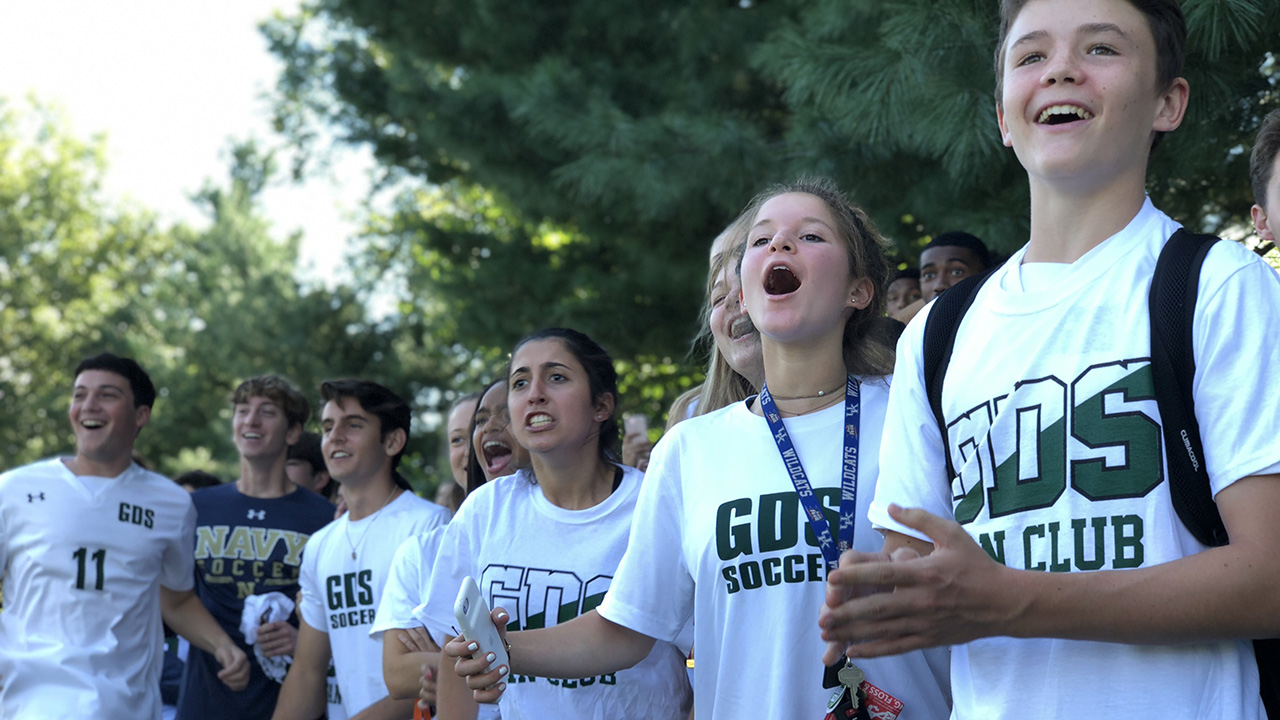When I think about our students, there are three things I want for them.
- To be joyfully present in the moment.
- To be prepared for college and career.
- To be healthy 35-year-olds.
After my first full year here as High School principal, I became aware of the fact that we spend so much time thinking about preparing our students for college and career, and not enough time thinking intentionally about #1 and #3. At GDS, college and career prep is happening. We have a track record a mile long, and our students are beyond prepared.
Like many other schools in the country, the pace and expectations around rigor, performance, and achievement tend to dominate our choices. And often the choices our students feel pressured to make fly in the face of our stated values as a community.
This is not an isolated issue to GDS. In fact, it is quite an epidemic throughout the country. And while this research is not new, I have enjoyed the way David Gleason has written about this crisis in his book At What Cost, Defending Adolescent Development in Fiercely Competitive Schools. He writes, “Anxiety, depression, and their dangerous manifestations—substance abuse, eating disorders, self-injury and suicide—are increasing student conditions at many competitive high schools. Paradoxically, most of these schools promote themselves as being committed to students’ holistic development in academics, athletics, and the arts, and in their personal, social, and emotional growth. So why are so many students struggling?”
Gleason shares results from interviews, with both schools and parents, in which he compiles a list of observed negative behaviors. He then addresses, from both the school and parent perspectives, how contradictory our stated desires are with our actual behaviors and how fear is driving that conflict.
Some of the observed problems are:
- Lack of motivation
- Sleep deprivation
- Anxiety
- Depression
- Feelings of being over-scheduled
- Expectations that are too high
- Self-harming behaviors
In light of these observed problems, schools and parents say they are committed to:
- Presenting students with an appropriate balance of challenge and support
- Meeting students where they are
- Supporting mental and physical health
- Helping students develop their sense of identity
- Providing a nurturing environment
- Celebrating unique talents
- Being there for them
- Loving them no matter what
- Having them be healthy above all else
Yet, schools and parents both admit to behaviors and actions that work against these above commitments. We:
- Over-schedule them
- Pile on more, but never take anything away
- Over-focus on college admissions
- Assign too much homework
- Adhere to old notions of rigor
- Model and normalize being over-scheduled
- Place too much emphasis on grades
- Praise overachievers
- Nag them all the time
- Don’t listen to their complaints
- Don’t respect their priorities
- Pressure them by the example of our own success or compare them to siblings
- Don’t let them listen to their bodies
- Micromanage their lives
When asked about what drives these choices, it is mostly fear-based for both schools and parents:
- Maintaining our reputation as an elite school
- Protecting our brand
- Getting kids admitted to selective colleges
- Pleasing parents
- Society would judge my parenting
- I’d be a failure in my life’s most important job
The bottom line is that schools and parents both have the best intentions when it comes to the children in our care, but our behaviors do not always align with these intentions, and it is our children who are suffering.
As a School, we are working to address these issues, and we will continue to listen to our students and to understand current research to inform changes we can make. Last year in our Neuroscience course, students used their own research on brain development to propose ways we could create a healthier school environment. While some of their proposals will take time to figure out how to implement (such as a later start time), others can be more immediate, like playing music in the school during certain times, or ensuring teachers are more effectively using MyGDS and following homework guidelines.
We are working with YPAR (Youth-led Participatory Action Research) and other interested students to find opportunities to get students off their phones. Research has shown that cell phones (even when not in use) are an incredible distraction. We have placed cell phone holders in each classroom to see what impact it will have on learning. We have intentionally created more spaces with comfortable furniture throughout the building, hoping that these nooks will provide more opportunities for students to talk and be together. We also have some teachers incorporating 60 seconds of quiet mindfulness as students enter their classes to create transitions that feel less rushed and more centered. And, we are beyond excited about our new, robust health curriculum for all 9th graders.
At home, parents can join with us in lessening students’ stress levels. Whether it is enforcing an earlier bedtime, having tech-free time, or giving your child the opportunity to tell you how and when it works for them to talk about college, my hope is that a series of small changes will begin to have an impact on our children’s emotional wellness and sense of self.
My ask of us all is to be more mindful of helping our kids to be joyfully present and to set them up to be healthy 35-year-olds, with happy lives.


